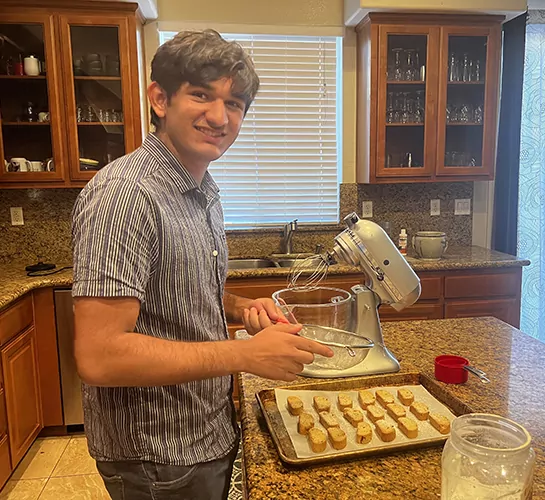Deeper Dive
Over the past decade, climate change has become an increasing problem with one of the major contributing factors being carbon dioxide (CO2) emission—almost 51% of total US carbon emissions are from factories. The effort to prevent CO2 from going into the environment is called carbon capture. Carbon capture decreases CO2 and also yields steam that can be used to produce energy, decreasing net energy costs by 25-40%, though the isolated CO2 must be sequestered through expensive means. Current materials used in CO2 capture are lacking either in efficiency, sustainability, or cost. Electrocatalysis of CO2 is a new approach where CO2 can be split and the components used industrially as fuel, saving transportation costs, creating financial incentives. Metal Organic Frameworks (MOFs) are crystals made of organo-metals that can adsorb, filter, and electro-catalyze CO2. The current available MOFs are expensive to manufacture and inefficient. As an avid research paper nerd that often falls into deep rabbit holes like this, an idea popped into my head. What if I could cross apply my knowledge in AI to make this process more efficient? As a maker, unafraid, I dove deeper into the literature.
Therefore, the engineering goal for this project was to design a novel MOF that can adsorb CO2 and use electrocatalysis to convert it to CO and O efficiently while maintaining a low manufacturing cost. After months of iterations, a novel biology-inspired active transfer learning neural network was developed, due to limited available data on 15 MOFs. Using the Cambridge Science Database with 10K MOFs, the model used incremental mutations to fit a trained fitness hyper-heuristic function. Eventually, a novel Se-MOF was converged on. The structure was validated by MIT MOFSimplify test showing the model had a complex understanding of the material space. This novel network could be implemented for other gas separations and catalysis applications using sparse datasets.
The greatest challenge would have to be tackling the extreme lack of data in niche areas of MOF research like electrocatalysis. To tackle the problem, I initially tried various training methods like trying to generate MOF’s with rollouts similar to chess algorithms or using techniques like actor critic models. After trying various algorithms I realized that none of the regular algorithms would work for this task—and that I needed to try something new. What eventually worked the best was actually taking inspiration from my AP Biology class! By essentially taking ideas from evolutionary radiation, the same way isolated species diffuse into new niches, I was able to create an algorithm that used extremely low amounts of data—decreasing the normal 10k datapoints to just 15! The pandemic also affected my project in a significant way, where I was then unable to gain access to a wet lab to synthesize the MOF—as the project was done independently— though to combat this I was able to perform rigorous computational tests & literature cross references.
In the face of continuous industrial pollution and the missing financial incentives to go green, this method could be a game-changer. Essentially by providing a way to turn CO2 into fuel, factories could gain profits from emitting less CO2 and selling the fuel they create. It offers significant financial incentives, potentially tipping factories towards becoming carbon neutral. The Metal-Organic Framework (MOF) could revolutionize the carbon capture process by eliminating sequestration, taking needless pipelines and pumping stations out of the equation. Turning CO2 into a net positive resource would be a great first step for environmental transition. Plus, the O2 that's produced could simply be returned as a net surplus to our atmosphere or repurposed industrially. The algorithm itself is hugely multipurpose. Possibilities include revolutions in artificial photosynthesis, water treatment, energy efficient desalination/electrolysis, and minimal data gas separation tasks—bringing the countless promised applications of MOFs from months of development to just a couple days.



